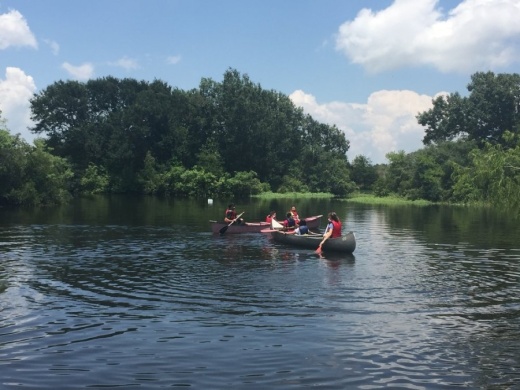Each local business and industry, from petrochemical to space, has its own unique set of strengths and improvement points when it comes to sustainability, said Kathy Garland, senior lecturer in environmental management at UHCL. The courses taught in the concentration help students learn which ecological issues are most prevalent in certain industries, as being able to identify specific improvement points is a crucial first step in sustainability management, said Garland and Dina Abdelzaher, UHCL associate professor of management.
Questions about sustainable business practices are asked and answered at an individual level, even if the issues at hand are prevalent worldwide, Garland said. One example is with sea level rising and flooding: These issues are hugely important to area petrochemical businesses because many of their plants are along Houston’s bayous, she said.
“These industries—they’re always adapting,” Garland said. “The change is global, but all of the adjustments are local because it’s different in every place.”
Businesses must closely examine their own ecological footprint and focus on balancing resources with cost through an incremental, gradual process, prioritizing the most pressing issues, Abdelzaher said.
“One way to get everybody to listen is to talk about how this is going to help the bottom line,” she said.
Sustainability management students at UHCL keep this balance at the forefront of their studies. Coursework involves understanding the intersections of economy, society and environment, as well as the parts that each play as consumer goods are made, from the raw material stage to disposal, Abdelzaher and Garland said.
Garland’s students identify local Leadership in Energy and Environmental Design buildings for a course she teaches; the national LEED system recognizes buildings using greener everyday components, such as energy-efficient lighting, solar panels and water conservation features. Several NASA facilities are LEED certified, Garland said, and she and her students have found that the number of LEED buildings in Clear Lake is increasing.
Other coursework within the sustainability concentration includes a class on energy economics, in which students gain an understanding of the larger players in the energy industry, and other courses examining business strategy. In all, students finish the program having learned how to promote sustainability at any level of an organization, Abdelzaher said.
Greener business practices involve both the products a business sells and the environments where they are created. Awareness of the life cycle of products and the toxicity of materials used to make them are important for manufacturers, she said. In buildings, simple actions—such as switching to LED light bulbs, planting pollinator plants on the property or renovating the building ventilation system—can all add up, Garland said.
The professors agreed there is a need for education among small business owners about how to properly execute these changes. They said the university hopes to someday have a sustainable business incubator where the knowledge of entrepreneurship professors and sustainability professors can be used to inform business owners, they said.
UHCL has promoted environmental research through the Environmental Institute of Houston on its campus since 1991. The institute “delivers unbiased technical and scientific expertise to provide clarity to environmental challenges,” according to its website, while incorporating graduate student researchers and promoting multidisciplinary collaboration through partnerships with various organizations and management agencies.
Other partnerships and outreach efforts the university hopes to further include those with area nature organizations. Armand Bayou Nature Center and UHCL have a good relationship, the professors said, which allows for new opportunities for both parties, but the key is creating more of these partnerships.
Sustainability is about making decisions to allow a business to move into the future with a longer life expectancy, Garland said. It is also about advancing equity in order to address issues such as wealth gaps: Responses to sustainability issues must involve decisions that consider the futures of people, society and culture just as much as they involve considering the external environment, she added.
“When the rich are stealing from the poor, you cannot have a sustainable planet,” Garland said. “This is as much about people as it is about what you can do in the exterior.”





